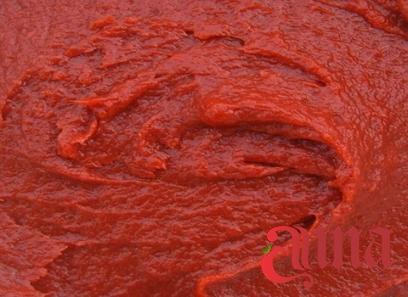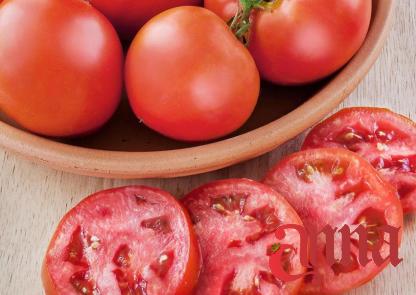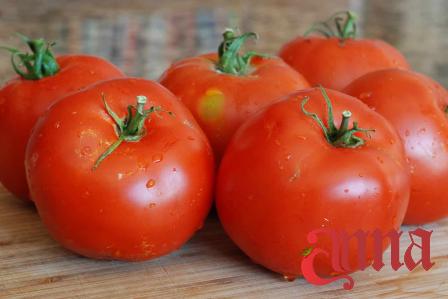Tomato paste is a staple ingredient in numerous culinary creations around the world. While store-bought options may seem convenient, there’s an undeniable allure in crafting this essential base from scratch. Not only does making homemade tomato paste allow for a more personalized flavor profile, but it also provides a rewarding and cost-effective alternative to store-bought varieties. In this article, we will delve into a simple and foolproof recipe for homemade tomato paste, exploring its benefits and potential business opportunities. 1. Why Make Your Own Tomato Paste? 1.1 Flavorful Customization: By making your own tomato paste, you have complete control over the quality and taste of the final product.

.
 Adjusting the levels of seasoning and using different varieties of tomatoes can result in unique flavor profiles that elevate your culinary creations. 1.2 Cost-effectiveness: Traditionally, a small can or tube of store-bought tomato paste can be relatively expensive. Making it at home allows significant savings in the long run, especially when utilizing fresh and locally sourced ingredients. 1.3 Health Benefits: Many commercially available tomato pastes contain added preservatives, sweeteners, or excessive sodium. By preparing homemade versions, you can prioritize the use of organic tomatoes while avoiding unnecessary additives, making for a healthier option. 2. The Recipe for Homemade Tomato Paste: 2.1 Ingredients: – 4 pounds of ripe tomatoes (preferably Roma tomatoes) – 2 tablespoons of olive oil – 1 teaspoon of salt – 1 teaspoon of sugar (optional) – Optional seasonings: garlic, onion, basil, oregano, etc.
Adjusting the levels of seasoning and using different varieties of tomatoes can result in unique flavor profiles that elevate your culinary creations. 1.2 Cost-effectiveness: Traditionally, a small can or tube of store-bought tomato paste can be relatively expensive. Making it at home allows significant savings in the long run, especially when utilizing fresh and locally sourced ingredients. 1.3 Health Benefits: Many commercially available tomato pastes contain added preservatives, sweeteners, or excessive sodium. By preparing homemade versions, you can prioritize the use of organic tomatoes while avoiding unnecessary additives, making for a healthier option. 2. The Recipe for Homemade Tomato Paste: 2.1 Ingredients: – 4 pounds of ripe tomatoes (preferably Roma tomatoes) – 2 tablespoons of olive oil – 1 teaspoon of salt – 1 teaspoon of sugar (optional) – Optional seasonings: garlic, onion, basil, oregano, etc.
..
 2.2 Preparation: – Wash the tomatoes thoroughly and remove any stems. – Slice each tomato in half and remove the seeds with a spoon. – Preheat your oven to 350°F (175°C). – Place the tomatoes, cut side down, on a baking sheet lined with parchment paper. – Drizzle the tomatoes with olive oil, sprinkle with salt and sugar, and any additional desired seasonings. – Roast the tomatoes in the oven for approximately 2 hours or until they are soft and slightly caramelized. – Remove the tomatoes from the oven and allow them to cool for a few minutes. – Blend the roasted tomatoes in a food processor or blender until smooth. – Place the blended mixture in a fine-mesh sieve or cheesecloth-lined colander set over a bowl. – Let the mixture strain for a few hours or overnight in the refrigerator, allowing the excess liquid to separate and collect at the bottom of the bowl. – Transfer the strained tomato paste to a sterilized glass container and store in the refrigerator for up to two weeks, or freeze for longer shelf life.
2.2 Preparation: – Wash the tomatoes thoroughly and remove any stems. – Slice each tomato in half and remove the seeds with a spoon. – Preheat your oven to 350°F (175°C). – Place the tomatoes, cut side down, on a baking sheet lined with parchment paper. – Drizzle the tomatoes with olive oil, sprinkle with salt and sugar, and any additional desired seasonings. – Roast the tomatoes in the oven for approximately 2 hours or until they are soft and slightly caramelized. – Remove the tomatoes from the oven and allow them to cool for a few minutes. – Blend the roasted tomatoes in a food processor or blender until smooth. – Place the blended mixture in a fine-mesh sieve or cheesecloth-lined colander set over a bowl. – Let the mixture strain for a few hours or overnight in the refrigerator, allowing the excess liquid to separate and collect at the bottom of the bowl. – Transfer the strained tomato paste to a sterilized glass container and store in the refrigerator for up to two weeks, or freeze for longer shelf life.
…
 3. Business Opportunities: 3.1 Home-based Businesses: Making homemade tomato paste offers an avenue for aspiring entrepreneurs to start a small-scale business. By producing and packaging artisanal tomato paste in various flavors or specialized blends, one can cater to niche markets or local farmers’ markets with ease. 3.2 Cooking Classes and Workshops: Experienced home-cooks or culinary professionals can organize workshops to teach others how to make homemade tomato paste. These classes provide not only an opportunity to share culinary knowledge but also to promote the benefits and joys of DIY food production. 3.3 Online Sales: Utilize online platforms to advertise and sell your homemade tomato paste. Highlight the unique flavors and customization options available, reaching a wider audience. Capitalize on the growing consumer interest in artisanal and homemade products. Conclusion: Making your own tomato paste at home is not only a delightful culinary endeavor but also a cost-effective and healthier alternative to store-bought varieties. The possibilities for customization and flavor exploration are endless, and with the potential business opportunities, the homemade tomato paste trend is set to continue growing. Give it a try, and savor the flavors of homemade goodness!
3. Business Opportunities: 3.1 Home-based Businesses: Making homemade tomato paste offers an avenue for aspiring entrepreneurs to start a small-scale business. By producing and packaging artisanal tomato paste in various flavors or specialized blends, one can cater to niche markets or local farmers’ markets with ease. 3.2 Cooking Classes and Workshops: Experienced home-cooks or culinary professionals can organize workshops to teach others how to make homemade tomato paste. These classes provide not only an opportunity to share culinary knowledge but also to promote the benefits and joys of DIY food production. 3.3 Online Sales: Utilize online platforms to advertise and sell your homemade tomato paste. Highlight the unique flavors and customization options available, reaching a wider audience. Capitalize on the growing consumer interest in artisanal and homemade products. Conclusion: Making your own tomato paste at home is not only a delightful culinary endeavor but also a cost-effective and healthier alternative to store-bought varieties. The possibilities for customization and flavor exploration are endless, and with the potential business opportunities, the homemade tomato paste trend is set to continue growing. Give it a try, and savor the flavors of homemade goodness!











Your comment submitted.